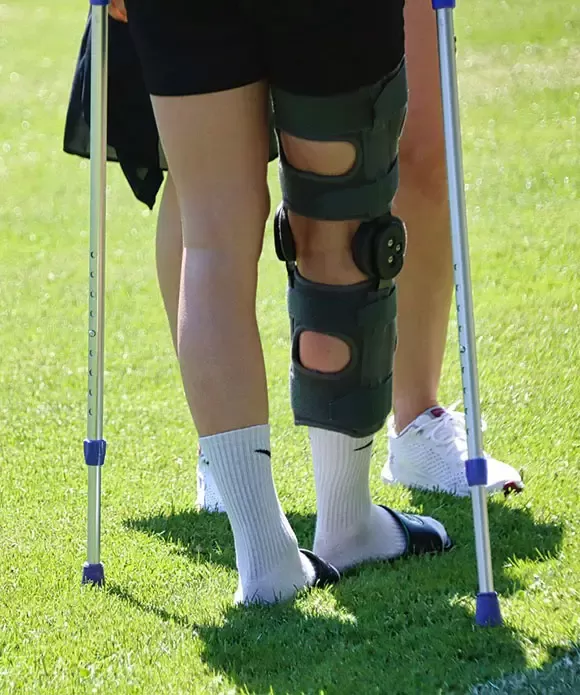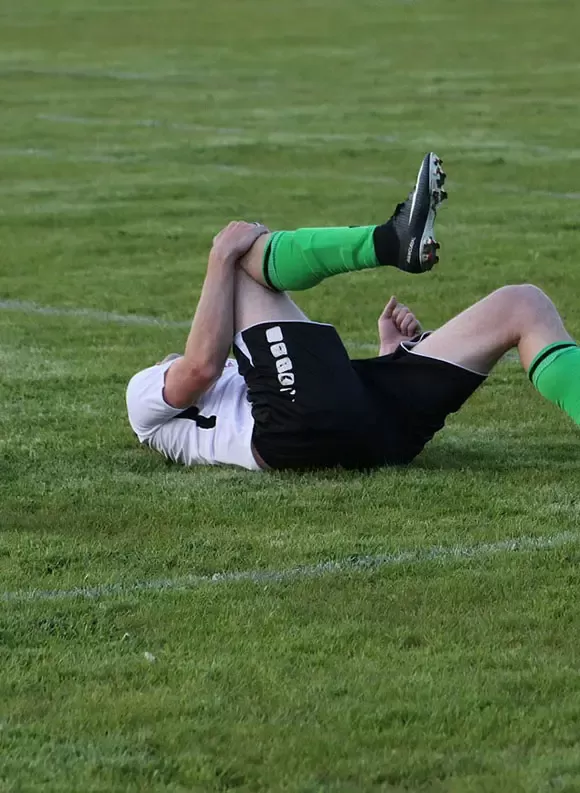Comprehensive Insights into Hamstring Injuries: Anatomy, Prevention, and Advanced Treatment Options
Our approach to hamstring care at Wimbledon Clinic Physio

Hamstring injuries, characterized by their complexity and prevalence, are a significant concern within the sports and physical therapy communities. Understanding the hamstring's detailed anatomy, the injury occurrence dynamics and innovative treatment strategies is essential for effective management and recovery.
Detailed Anatomy of the Hamstring
When we treat the hamstring, it is essential to know it is not a single muscle but a group of three powerful muscles at the back of the thigh—semimembranosus, semitendinosus, and biceps femoris. Each muscle originates near the pelvis and inserts past the knee joint, thus acting on both the hip and knee.
The three parts of the hamstring we treat at Wimbledon Clinic physio:
- Semimembranosus is the most medial, contributing to thigh extension and knee flexion.
- Semitendinosus, slightly more lateral, plays similar roles but with a slight variation in its insertion.
The biceps Femoris has two parts (long head and short head), with the long head aiding in thigh extension and both assisting in knee bending (aka knee flexion).
The anatomical arrangement allows for complex movements essential for walking, running, and jumping, highlighting the hamstring's importance in lower body function.
Grades of Hamstring Injuries we treat in Wimbledon Clinic Physio
When we treat Hamstring in Wimbledon injuries, we categorized them into three grades, which help in diagnosing the severity and guiding treatment:
- Grade I (Mild): Small tears within the muscle fibres, causing minimal strength loss and pain.
- Grade II (Moderate): Partial tears of the muscle fibres, with moderate pain and a noticeable decrease in function and strength.
- Grade III (Severe): Complete muscle tears with intense pain and a significant loss of function, often requiring surgical intervention.
The Role of Muscle Imbalance in Hamstring Injuries
A well-documented risk factor for hamstring injuries is the strength ratio between the hamstrings and the quadriceps. Ideally, the hamstrings should have a strength capacity of at least 60-80% of the quadriceps. When this balance is off, mainly if the quadriceps are more robust, the risk of injury increases significantly. This imbalance can lead to an increased load on the hamstrings during high-speed activities, making them prone to tears.
Research indicates that targeted strength training can correct these imbalances, reducing the risk of injury. Studies in the *Journal of Applied Physiology* (2022) recommend eccentric strength exercises to enhance hamstring resilience and balance relative to the quadriceps.


Core Stability's Impact on Hamstring Health
The influence of abdominal muscles on hamstring health is profound. Core muscles help stabilize the pelvis and spine, affecting the alignment and function of the lower limbs. Weak core muscles can lead to a pelvic tilt, increasing strain on the hamstrings. A study published in the *Clinical Journal of Sport Medicine* (2021) found that athletes with stronger core muscles had a lower incidence of hamstring injuries. This is likely due to more stable pelvis positioning, which optimizes the operating length of the hamstrings and reduces their vulnerability to excessive stretch and tears.
At Wimbledon Clinic Physio, we aim to address these significant markers of improvement for hamstrings to reduce reoccurrence.
Lesser-Known Hamstring Issues
While strains are the most common form of hamstring injuries, other less obvious problems can also impair function:
- Hamstring Avulsion: Often occurring in explosive sports, where the muscle tears away from the bone, sometimes taking a bone fragment with it.
- Hamstring Tendonitis: This involves inflammation of the hamstring tendons, typically due to overuse, and manifests as a deep, aching or sharp pain in the buttock area. It is very common to get mistaken for sciatica as it often exists in combination with back and pelvic pain.
- Pes Anserine Bursitis: Common among runners, it presents as pain on the inner side of the knee due to inflammation of the bursa (a sack of fluid that acts as a friction buffer or lubricator) that sits between the shinbone and the hamstring tendons.
- Posterior Knee Hamstring Tendinopathy: This condition affects people with hyperflexible knees, often following an incident that causes the knee to hyperextend.
Advanced Treatment Strategies for Hamstring Treatment at Wimbledon Clinic Physio
Wimbledon Clinic Physio operates state-of-the-art treatment protocols tailored to individual needs. Our holistic approach includes:
- Conservative Rehabilitation: Customized rehab plans focus on strengthening the hamstrings and the muscles of the kinematic chain like the glutes and calves.
- Active Release Techniques (ART): This therapy breaks down scar tissue, improving flexibility and decreasing pain.
- Orthotic Solutions: We collaborate with a renowned foot pain clinic to provide bespoke orthotic inserts, helping align lower limb biomechanics and reducing hamstring load.
The Promise of Focused Shock Wave Therapy for Hamsting Therapy
A novel approach in our treatment repertoire is Focused extarcoropreal Shock Wave Therapy F-ESWT. This non-invasive therapy normall just called shock wave therapy has two types Radial which typcilly cant get deep enough to help stimulate and breakdown scar tissue and Foucsed which has been shown to break down scar tissue and enhance blood flow, significantly improving outcomes in chronic hamstring tendinopathy and scar tissue buildup. According to recent research published in the *International Journal of Sports Physical Therapy* (2023), shock wave therapy is effective in reducing pain and increasing function, offering hope for those suffering from longstanding hamstring issues.
Hamstring Treatment in Wimbledon - Conclusion
Comprehensive understanding and advanced therapeutic approaches are essential to effectively managing hamstring injuries. At Wimbledon Clinic Physio, our integration of anatomical knowledge with cutting-edge treatments ensures that our patients receive the best care possible, fostering quicker recoveries and long-term health benefits. With ongoing research and evolving treatment modalities, the outlook for individuals suffering from hamstring injuries continues to improve, promising enhanced quality of life and performance.